
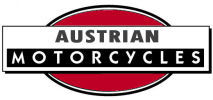



This page lists brands for which we currently have only an historical precis.
For a more complete listing visit the Austrian Index.
Albl
Manufactured by Benedict Albl of Graz. Active as a bicycle producer since 1888 after a visit to England inspired him, he had been making sewing machines and washing machine since about 1880. Based on the De Dion, the firm's first motor vehicle was a tricycle, but it appears that subsequent models were four-wheelers built by Benedict's son Josef Albl. The machines were named the Albl Phönix.
Sources: voz.co.at, wikipedia, et al
Alko
Manufactured by Alois Kouril in Vienna, 1927-1930
These motorcycles employed single cylinder and V-twin engines from JAP and MAG, with many components manufactured in-house.
A 1927 490cc JAP SV model exists in a private collection in Vienna.
Sources: GTU Oldtimerservice, voz.co.at
AOK-Kosessnjk
Alois Kosessnjk developed his motorcycle from 1931 until the time of his death in the late 1950s.
Only recently discovered, the only known survivor is in the Motorrad Museum Austria. More information is available on the museum's site in the Reader's section.

Austria 1903-1907
Austria-Motorenwerke was founded by Josef Mezera in Vienna (Rennweg 21) and operated from 1903 until 1907 building bicycle attachment engines and lightweight motorcycles. His son Rudolf Mezera, who raced in the 1926 Austrian TT, worked with Austro-Motorette in the 1930s.
Sources: Tragatasch p80, vox.com.at
Austria 1930-1933
In 1930 Austria Motor-Fahrzeug was created by Karl Lamperts and H. Hauler in Trautmannsdorf and lasted until 1933. These used aluminium alloy frames from Ardie housing Villiers two-strokes including water-cooled models, and Sturmey-Archer 350cc sidevalve engines, and were known as "Ardie in Austria".
The firm had taken over the production of the DSH marque (of which Hauler was co-owner) when that firm failed. The new Austria machines were of similar construction, using the same engines.
Sources: Tragatasch p80, vox.com.at
Austro-JLO
Manufactured by Temple & Co. of Vienna, 1938
Activities were curtailed when Hitler's jackboots marched into the country a few months after production commenced, making it one of the shortest-lived marques in history.
The firm, which had been an importer of Super-X and Henderson motorcycles, built a lightweight using a 60cc JLO bicycle attachment engine which could be mounted within the frame above the pedal crank, or on a carrier rack above the wheel.
Sources: GTU Oldtimerservice, voz.co.at, Tragatasch p80
Balier-Schafer 1914
Bartisch 1925-1929
Danneck
The Danneck machine has a twin-cylinder two-stroke engine. It is believed to be of Austrian origin, but little information on the marque is available.
Presented at the Vienna Exhibition (Feb 28-Mar 12th 1907).
Source: The Motor Cycle 1907
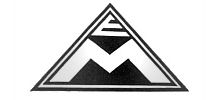
EM, and Minkus
Manufactured by Ernst Minkus Fahrzeugbau of Vienna, 1928-1930
First presented in 1928 at the Vienna Spring Fair, the motorcycle had a 497cc twinport IOE MAG engine. The firm also marketed British motorcycles under the Minkus marque.
Sources: GTU Oldtimerservice, Tragatsch p126.

Embag
Manufactured by Ennser Maschinenbauges. m.b.H., Enns, 1922-1924
An advertisement from 1923 shows an Embag 1 PS with a two-stroke engine built in-house.
Sources: GTU Oldtimerservice
EOS
Manufactured by EOS-Werke AG in Vienna, 1921-1922
Built three-wheeled utility vehicles and passenger tricars.
Sources: GTU Oldtimerservice
Err-Zett
Manufactured by Ottmar Rosenkranz, Vienna, 1938-1939
The firm built light motorcycles with 98cc two-strokes engines from Sachs and JLO. When the National Socialists invaded the country Rosenkranz was ordered to cease production.
Sources: GTU Oldtimerservice, Tragatsch p128.

Force
Manufactured by Eduard Huber Motorradbau, Wien (Vienna) 1925-1926
Produced for only one year, the motorcycle was powered by a 350cc two-stroke engine built in-house.
Sources: GTU Oldtimerservice, Tragatsch p138.
Fraenkel & Kirchner
Three-wheeled microcar manufactured in 1954 powered by a 199cc two-stroke engine. Convertible, two wheels at front, bench seat with cargo space behind.
A short note in an English magazine reads:

Freyler
Manufactured by A. Freyler & Co. of Vienna 1927-1929
The company developed a rotary valve four-stroke of dubious merit, designed by Adalbert Fryler. The company failed in 1929* and the assets were purchased by Rudolf Zemann of RZ.
* Possibly failed in 1928, sources differ.
Sources: GTU Oldtimerservice, Tragatsch p139.
Fuchs
Manufactured in Austria by HMW
A-Z der Belgische Motoren

Fulgur
Manufactured by Ing. A. Neumann & Co., Vienna 1924-1938
The firm built Göricke motorcycles under licence but was forced out of business when the Nazis invaded and began ethnic cleansing. The company was purchased by Ottmar Rosenkranz, whose company also suffered under the new regime but for different reasons.
Source: GTU Oldtimerservice
Gayer
Manufactured by Michael Gayer, Vienna 1935-1939
A successful motorcycle racer whose mount was Chater-Lea, Gayer began building his own specialised competition machines in 1935 with bevel-driven OHC engines derived from Chater-Lea. He continued building these after the war and, ridden by Georg Mach, the marque received many laurels.
Sources: GTU Oldtimerservice; voz.co.at.
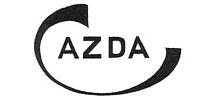
Gazda
Manufactured in Vienna 1924-1927
Best known for its aftermarket leaf-spring handlebars offered as optional extras by other makes, the firm built motorcycles powered by their own 246 cc two-stroke and also used Villiers engines. After 1927 they continued building aftermarket motorcycle components.
Source: GTU Oldtimerservice, Tragatsch p143.
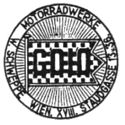
Golo
Manufactured from 1923 to 1925 by Wilhelm Schweppe, Golo-Motorradwerke, Vienna XVIII, Staudgasse 13 & 36.
Built motorcycles with 350 and 500cc Blackburne engines and a Sturmey-Archer gearbox. The firm imported OK motorcycles from Britain during this period, and also marketed Scott.
Source: GTU Oldtimerservice
JLS
Manufactured by Johann Lechner of Stockerau 1926-1930
Some models had their own a 555cc water-cooled single-cylinder 2-stroke engine, balloon tires and, on later models, a saddle tank. They used rim brakes until 1929. Lechner also built motorcycles with 300 to 1000cc JAP engines, the larger model having a Sturmey Archer gearbox.
Source: GTU Oldtimerservice

Johammer
Manufactured by Johammer e-mobility GmbH
Electric Motorcycle
Website: johammer.com
FB: fb.com/johammeremobility
JW 1923
Karl Cerny 1925-1929
Karmeli 1904-1905
Kosty
Manufactured by Hans H. Kosteletzky, Vienna 1952-1953
Designed by Otto Kauba, formerly of Lohner, this attractive scooter was powered by a Rotax two-stroke. Outpriced by its rivals, the Kosty 100 lasted only one year. Kauba went on to form his own company in 1953 and produced a version of the Kosty as the Lux.
Source: GTU Oldtimerservice
Krammer
Manufactured by Mechanische Werkstätten Rudolf Krammer, Vienna 1923-1929
These high-quality bespoke motorcycles were fitted with Persch, Villiers, Anzani and MAG engines, and probably others. Several have survived.
Source: GTU Oldtimerservice
Krauseco 1926-1939
LAG 1921-1929


KSR Group
Based in Gedersdorf near Krems, the firm is involved in Brixton Motorcycles, Lambretta, Royal Enfield and Malaguti.
Source: ksr-group.com
Lanco 1922-1926
Libelle
A 3-wheeler built in Austria 1952-1953 using a Rotax 199cc engine. There were several designs, one of them notable for steering via the driven rear wheel. The vehicles seated two, had a generous carrier at the rear, and looked rather like a golf cart.
There was also a German Libelle scooter built in the same period.
Source: voz.co.at
LS
Manufactured by Lapp & Schuller, Vienna 1923-1924
The company built its own 150cc engines, and the motorcycles were fitted with a two-speed gearbox and a kickstarter. None have survived.
Source: GTU Oldtimerservice
Meister Microcars
Manufactured by Hans Meister of Graz, these were powered by Puch 49cc engines and had fibreglass bodies mounted on a tubular frame. Production figures are thought to be 135 for the K5 and 205 for the K6.
N.B. Unrelated to Meister of Germany.
Source: Bruce Weiner Microcar Museum
Messner
Manufactured by Franz Messner of Vienna, 1928-1933
Messner was a successful rider of HRD racing motorcycles and specialised in tuning JAP engines, which he fitted to his own machines. These were later powered by 250cc OHC engines of his own design. They were used for racing purposes and did not enter production.
Source: GTU Oldtimerservice
Mezo
Manufactured by Medinger & Zogelmann in Vienna, 1923-1924
Primarily a producer of motorcycle frames, the firm built a small number of motorcycles (possibly 30) using engines from DKW, Villiers, JAP and Blackburne. Motorcycle production ended when Hermann Medinger had a serious accident at the Austrian TT.
Source: GTU Oldtimerservice
Monos
Manufactured by Monos-Fahrzeug AG, Vienna 1922-1923
Built passenger triporteurs and commercial motor tricycles.
Source: GTU Oldtimerservice
Montlhery
Manufactured by Motorradbau Leopold Sykora, Vienna 1926-1928
Named for the famed French racing circuit, Montlhery motorcycles were bespoke creations using a variety of engines including JAP, Küchen and Laurin & Klement. Leopold Sykora was an active road-racer, and a rather beautiful photograph of him in action is available at the technischesmuseum.at, image reference FE-GA-1932-0063-1.
Source: GTU Oldtimerservice
Moser
Manufactured by Moser & Co. Motorradbau, Mattighofen
The firm built two-stroke models using 98cc and 123cc Rotax engines and was involved in the formation of KTM.
Source: wikipedia.nl

Motron
Produces 125cc motorcycles, 50cc scooters, electric motorcycles and scooters.
Website: motron-motorcycles.com
MP-Beiwagen
Manufactured by MP Max Porges - Wien (Vienna) 1926-1950s.
Post-war, these sidecars were supplied to the Austrian police force.
MP Beiwagen 1930s Poster
Source: motomuseum-hostalek.cz
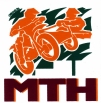
MTH Engines
From 2000 to 2002, the Latvian sidecarcross riders Kristers Sergis and Artis Rasmanis won three world championships aboard an MTH BSU.
MTH also built inline two-stroke twins for ultralight aircraft.
Specifications
Website: mth-engines.at ✝
Müller
Manufactured by Motorradfabrik H. Müller jun., Vienna 1924-1926
The Müller-Leichtkraftrad was advertised with a 183cc displacement two-stroke engine which had a large external flywheel.
Source: GTU Oldtimerservice, Tragatsch p222
ÖWA 1920s
Perpedes
Manufactured by Karl Heinisch of Graz in 1924-1925* and marketed by Stouratz in Vienna, the lightweight motorcycles were fitted with engines from LAG and Persch, the latter of 118cc.
* Tragatsch gives 1922-1926.
Sources: GTU Oldtimerservice, Tragatsch p248
Reform 1903-05
Rekord Beiwagen
Sidecars manufactured by Kommerzialrat Franz Castek in Vienna from 1936 to 1960.
Wien 14, Sturzgasse 2 & Linzerstraße 10.
Models include Reise-Cabriolet, Cabriolet and Canu (Canoe). Some models had sidecar suspension.
Sources: FB Group Rekord Beiwagen - Seitenwagen Wien, et al
Rotor
RZ 1928-1930
Scheibert 1907-1913
Wiener Leichtbeiwagen
Manufacturer of sidecars 1951 to 1955, models include Leichtbeiwagen-Cabrio der Type N.
Sources: fahrzeuge.dorotheum.com; OMuB; weishaupt.at.
W & W
Wega
Werner
Wertal
Wespe
WKB
R
Manufactured by Adolf Volly, Neunkirchen 1924-1938
Built motorcycles from 250 to 1000cc using SV OHV singles and a SV V-Twin. The business was destroyed when the Reich took control of the country.
Source: GTU Oldtimerservice
S
Styria
W
Manufactured by Wild & Wildberger, Vienna 1925-1927
Another of Josef Wild's ventures (see also JW, Lanco, Wega), he and K. Wildberger revamped the Lanco project, building two new models with MAG engines. Most were fitted with the 498cc single, but V-twins of 746 and 996cc could be supplied to order. From 1927 Wild was the general agency for Ernst MAG from Breslau.
Source: GTU Oldtimerservice, Tragatsch p299.
Manufactured by Wild & Ackermann, Vienna 1923-1924
Josef Wild was also associated with JW and Lanco. He and his partner Ackermann used a DSH frame fitted with a two-stroke 149cc engine to produce their own motorcycle. Few were made in the single year of production.
Source: GTU Oldtimerservice
Manufactured by Rio garage, Fritz Werner, Vienna 1928-1929
The men behind the name were well known in Austrian motorcycle circles: Josef Illichmann (designer), Fritz Werner (motorcycle rider) and Leschan. The Werner was built in small numbers and usually only to order. Some 60 machines were created using engines from MAG and JAP.
Source: GTU Oldtimerservice
Manufactured by Federungen-, Rahmen- u. Motorenbau G. Wertal of Nordwestbahnstraße 39, Vienna 20.
Initially built with a twin-loop frame similar to the Featherbed, Earles-style leading link forks, and a Puch TF twingle two-stroke. Further development saw the use of a variety of engines according to customer preference, including a Konig, NSU and Triumph, and OHC engines from Norton and Parilla.
In total some 30 machines were constructed. An example of the Wertal-Puch is in the collection of Motorrad Museum Krems-Egelsee.
Sources: voz.co.at, Österreichische Motorräder und Beiwagen 1918-1960, et al
Manufactured by Thos. G. Harbourn in Vienna in 1937 and 1938, the Austrian importer of Triumph and Villiers.
The firm built a two-stroke model using a 123cc Villiers engine shortly before Mr Hitler stopped the music, setting a fine example for Mr Putin.
Source: Tragatsch p296.

Manufactured by Kummer, Medinger & Co., Vienna 1923-1924
The We-Ka-Be engine company in Vienna produced an auxiliary bicycle engine which was very similar to the DKW auxiliary engine
Source: GTU Oldtimerservice, Tragatsch p298.